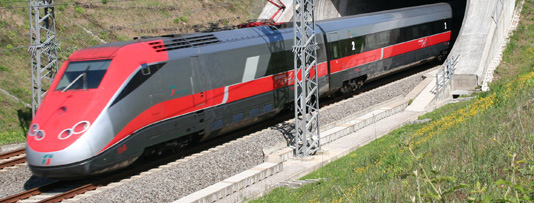From the Frecciarossa high-speed trains to the Treno Natura tourist service which runs through the Crete Senesi: the railway network inTuscany, totalling 1479 km of lines and 2271 km of track, has some incredibly multi-faceted characteristics. The main lines, of which the Milan – Rome high-speed arterial route is obviously the most important, cover 767 km, while the secondary lines, including the ones running through the Siena area, used not only for providing regional services but also by tourist trains drawn by magnificent steam engines, add a further 665 km to the network.
Finally, about 50 km of lines make up the hub lines most of which are inFlorence. This dichotomy can also be seen by analyzing the network in terms of infrastructure types: 792 km of line are double track, 687 km are single track, and while 976 km are electrified no less than 503 km are still diesel traction. In short, a varied landscape with “strong” lines with heavy traffic, such as the one running down the Tyrrhenian coast and the Bologna-Rome main line (operating as a standard and high-speed line) and a broad and capillary network of local connections providing an important regional service. Another feature is the strong centralization of traffic on the city ofFlorence and to a lesser extent onPisa. If one considers the presence of two of the country’s north-south corridors, not to mention an important mountain pass freight line which runs from the ports on the Tyrrhenian Sea to the Po Valley, such as the Pontremolese railway line, it is clear thatTuscany represents a key area for the entire Italian railway network. We spoke to Massimo Del Prete (Engineer), head of the Florence Maintenance and Operations Department for RFI.
Full article is available only for registered users.
Click the link below to download pdf version of Railway Engineering
